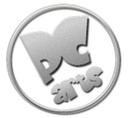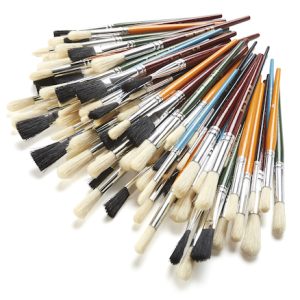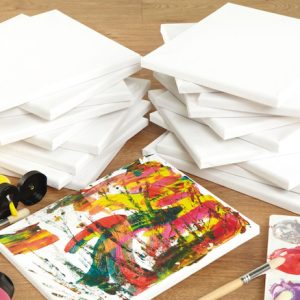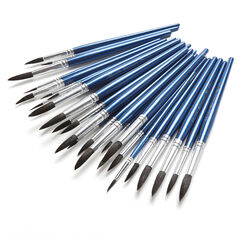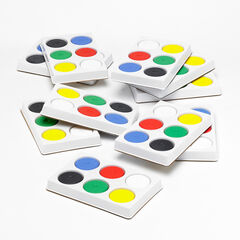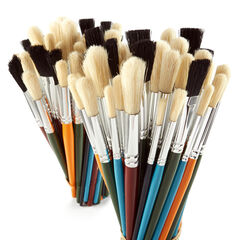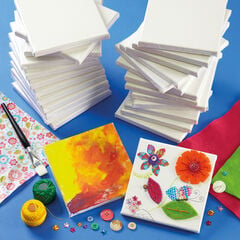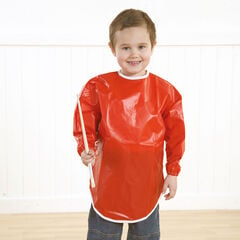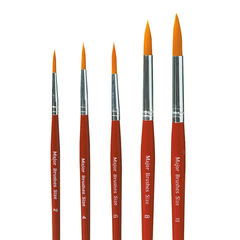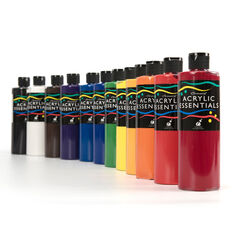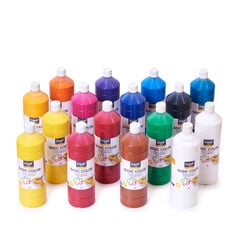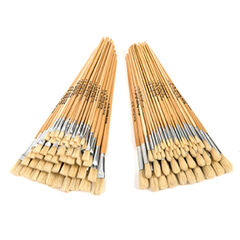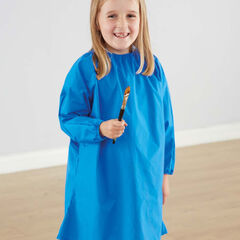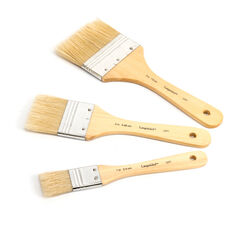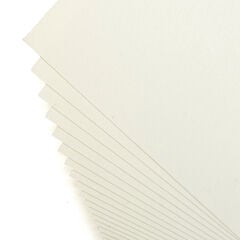Painting Skills Paul Carney
This blog about Painting is the second of three blogs by Art & Design Consultant Paul Carney. Part 1 is on Drawing. Read here to find out about Painting and use the accompanying Activity Cards to enhance Painting in your classroom.
Painting
In my previous blog on the progression of drawing, we discussed how art is often compartmentalised into distinct skills areas. However, the fact is that at the root of those skills are the same core abilities, fine motor skills.
The Importance of Motor Skills
Fine motor skills underpin most practical tasks, not only in art but in DT and elsewhere too. These skills are what we need to sew, to cut out with scissors, use saws or craft knives, to make sculptures, paint, write or draw. Pupils with gross and fine motor limitations may find gripping a paintbrush challenging. But introducing brush techniques early will lead to healthy cognitive sensory development and help to improve motor skills.
I also mentioned that girls develop fine motor skills earlier than boys (often before the age of 5). Boys tend to develop gross motor skills quicker than girls (from around the age of 5). Curriculums that are more formal and focus on small-scale activities based at tables will usually favour girls’ abilities over boys. This maybe one of the reasons why girls often perform better in art than boys.
Painting is one such activity that can and does use gross motor skills when done on large scales such as canvasses or murals. The problem with this of course, is that schools can’t really accommodate painting at this scale. Watercolour painting often dominates, because it is cleaner and can be done at desks. Constraints such as, order, cleanliness and being desk bound, hamper, and restrict the kinds of painting activities teachers do. I don’t blame teachers for this though. Most primary classrooms are full-time teaching spaces that need to be used for a wide range of lesson activities. Teachers can’t be expected to do painting lessons using acrylic paint and canvasses in one-hour lessons that will later be used to teach Maths. Also, classrooms are usually carpeted too, which makes painting even more daunting!
Getting Started-Top Tips for Painting
- Encourage children to stand up when painting using full body movements.
- If sat at tables, consider using desk top easels or a drawing board propped up against the wall, so as not to restrict the brush strokes they can make.
- Use good quality art materials making children feel like artists.
- Give children the opportunity to work with different types of paint and materials. Encourage them to record their findings and make annotations so they can see what works best.
- Due to many skills overlapping remember to make connections between the different art forms so children can strengthen knowledge and make links.
- Encourage children to experiment with mixing colours by providing them with primary colours only. (Remember to buy brilliant primary colours, along with sky blue, cobalt blue, crimson, lemon yellow and yellow ochre. Also black and white, to allow children to create unlimited secondary hues).
- Oh and don’t forget to use those all-important aprons to protect uniforms!
Painting Activity Cards
To find out more about painting why not take a look at Paul Carney’s Activity Cards. Try out the techniques and resources suggested and then read Art Skills Part 3- Sculpture Skills with Paul Carney.
There’s so much more to learn about painting than I can fit in this blog, but hopefully, you’ll have picked up a few tips and expanded your knowledge a little. I can’t stress enough how much the quality of the art materials you use affect the outcomes of your pupil’s work. You can cut many corners in Art, such as using recycled materials and found surfaces, but these can only take you so far. Making decent quality art isn’t cheap. I know times are hard, but they always have been. The best schools understand how expensive art is and make money available for its delivery. Using poor quality art materials can be like trying to make art with one hand tied behind your back.
Above all, learning to improve your painting skills takes time and motivation. Curriculum time is hard to find, but motivation comes from designing high-quality, open-ended lessons that transmit core subject knowledge within creative outcomes. If you can do that, and they enjoy it, then pupils will paint at home as a hobby. If they are doing that, then your job is half done.
Thank you to Paul Carney for writing this blog.
Paul Carney
Education Consultant
Email: admin@paulcarneyarts.com
Twitter: @PaulCarneyArts
Facebook: Paul Carney Art
Biography
Paul is a nationally recognised art & design consultant having delivered specialist art CPD in schools, colleges, galleries, and Universities across the UK and for the UK’s leading art education providers; including the National College, Kapow Education, Access Art, NSEAD, BBC Bitesize, Mary Myatt and Osiris Education.
Paul is a published author of two books: Drawing for Science, Invention and Discovery and his latest book Drawing to learn anything. He is also a practicing professional artist and designer.
Paul runs his highly successful art website: paulcarneyarts.com that provides high quality teaching resources and advice to teachers around the world. He has over twenty years teaching experience at Primary, Secondary and post-16 levels of education, is an Advanced Skills Teacher, ex-Subject Leader for Art and was a member of the DfE Expert Advisory Group for Art and Design.
In addition to this he was a member of the NSEAD Curriculum Writing Group that wrote the ‘Framework for Progression, Planning for Learning, Assessment, Recording and Reporting 2014.’



